P-40s of the 49th Fighter Group – Part 1 (Early Days)
Today's Air Force has decided to emphasize its history as a means of unit inspiration.
This has resulted in units with real “history” as the service decides which unit designations will continue in active service, so that one finds the 1st Tactical Fighter Wing - which is the lineal descendant of the Lafayette Escadrille and the first USAS squadrons to fight in World War I. The 4th Tactical Fighter Wing are descended from the Eagle Squadrons and the 4th Fighter Group; the 23rd Tactical Fighter Wing (Composite)are descendants of the American Volunteer Group; and the 49th Tactical Fighter Wing memorializes the 49th Fighter Group , the first organized American fighter group to enter combat in the Second World War.
The history of the first six months of the 49th Fighter Group in combat - when they were the first line of defense of Australia against Japanese invasion - is a record of achievement in the face of overwhelming odds beyond merely fighting a well-trained, well-equipped, victorious enemy that fully places the 49th Fighter Group in the same tradition as the 1st, 23rd, and 4th Groups.
The 49ers were formed in late 1941 from cadre of the 94th Pursuit Group. The three squadrons were the 7th Squadron, who would take the name "Screamin' Demons", the 8th Squadron known as the "Blacksheep," and the 9th Squadron, which adopted the name "Flying Knights." Each squadron was equipped with a PT-17 Stearman, a PT-13 Basic Trainer for further instrument work, three Seversky P-35 trainer fighters and one P-40C for "advanced" training. Major Paul “Squeeze” Wurtsmith took command on December 12, 1941.
Rumors spread through the unit as they were notified at the end of the month to begin preparation for overseas deployment that they were going to reinforce the Philippines. On January 4, 1942, they were sent to California, arriving in San Francisco on January 8, where they stayed in the County Livestock Pavilion, known as the "Cow Palace". While there 75 new pilots and 587 more enlisted men joined up to bring the unit to full authorized strength. Among the fresh-caught 2nd Lieutenants were newly graduated pilots John D. Landers and George E. Preddy. Two days later they boarded the transports Mariposa and Coolidge, while their heavy equipment was loaded aboard the freighter Luckenbach. Outside the sight of land, they rendezvoused with the light cruiser USS Phoenix, and set course toward the western Pacific.
The rumors were right: they were headed for the Philippines. Following MacArthur's retreat to Bataan, their destination was changed on January 28 to Melbourne, Australia, where they arrived on February 1. Over the next three days, after Australian longshoremen refused to unload the ships, the officers and men unloaded all their supplies and equipment by hand. Welcome to the war. P-40s and B-25s, originally headed for the Philippines had been diverted to Brisbane and Townsville.
The plan was to fly them to Brisbane, then on to Charleville, to Cloncurry in Queensland and finally to Darwin, from whence they would fly direct to Java, now the front line. The route was known as “the Brereton Route" and was 3,600 miles long. As it was later described to a pilot of the 49th: "You won't have any trouble finding your way to Darwin. Just follow the trail of crashed Kittyhawks, you can't go wrong." Flying "The Brereton Route" was the equivalent of flying from Boston to New Orleans, along the edge of North America, without ground support, navigational aids, or reliable maps, with most of the inland regions being marked "unexplored."
Half the 49ers airplanes were put aboard the USS Langley, and ended up going down with her when she was sunk by Japanese cruisers in the Java Sea. With Indonesia lost, Darwin was now the front line of defense and the 49ers were the sole fighter defense of Australia. The 49ers got a number of experienced pilots who'd survived the Philippine defeat: Captains Nate Blanton and Bill Hennon, and Lieutenant Lester Johnsen became flight leaders in the 7th Pursuit Squadron; 8th Pursuit Squadron got Flight Leaders Captain Allison W. Strauss and George Kiser, while Lieutenants R.C. Dockstader and Jim Morehead became element leaders; 9th Squadron got Captain "Bitchin" Ben Irvin, while Lieutenants Joe Kruzel and Andy Reynolds became element leaders. They were each equipped with 25 airplanes, composed of USAAF P-40Es and Lend-Lease Kittyhawk 1As.
On March 4, 7th PS CO Captain Morrissey and 11 others left Bankstown, headed for Horn Island. Since there was no ground support between Bankstown and Darwin, the line chief issued each pilot a small tool kit with spark plugs and tools and the armorers instructed the pilots how to load the guns; Morrissy carried a wobble pump and length of hose so they could refuel from 55-gallon drums. Using road maps to find Brisbane, they then used maritime maps to find their way up the Queensland coast. Three had to divert to Charters Towers due to mechanical problems. The remaining nine finally arrived at Horn Island at the tip of Cape York the afternoon of the 8th. The next day they began flying patrols.
On March 8, 25 Kittyhawks of the 9th Pursuit Squadron left Williamtown to follow “The Brereton Route" to Darwin. They left behind two P-40s with engine trouble at Brisbane, flew to Charleville where they left behind two more aircraft with mechanical problems. 21 pressed on for Cloncurry, led by a B-17. Two more were lost at Cloncurry to heavy landings; 19 flew to Daly Waters on March 14, where four became separated in heavy thunderstorms. 15 landed at Daly Waters between passing rain storms. A three day delay allowed needed repairs. Of the 25 P-40s that left Williamtown, 13 finally arrived at Darwin on March 18. They received orders to start operational patrols immediately. By the end of the month the 9th PS had 21 Kittyhawks and 25 pilots at Darwin. They were the front line of defense of Australia.
The 49ers entered combat on March 14,1942, when the 7th Pursuit Squadron claimed 4 Zeros and 1 Betty in a raid on Horn Island. Between then and the end of July when the Japanese threat to Australia faded in the aftermath of Midway,. the 49ers shot down 64 Japanese aircraft for the loss of 16 - a 4:1 victory ratio set by young, inexperienced pilots in an outclassed airplane.
The influence of the 49ers was felt throughout the USAAF, particularly the 8th Air Force, over the rest of the war as these first veterans rotated home. Joe Kruzel became CO of the 361st FG in August 1944. John D. Landers, who became an ace over New Guinea and survived being shot down over the Owen Stanley Mountains, eventually commanded the 78th FG after a tour in the 357th FG. Sidney Woods, who survived a crash on the Brereton Route, filled the gap left by the departure of Don Blakeslee when he took command of the 4th FG. George Preddy went to the 352nd FG and became the top-scoring P-51 pilot of history. 49er CO Paul Wurtsmith became the youngest General in the USAAF and ran 5th Air Force Fighter Command from 1943 until he took command of the 13th Air Force in 1945 at the age of 32.
The models: 1/32 Hasegawa P-40E/Kittyhawk Ia "Green Dragon" of Joe Kruzel with SuperScale decals and Eduard seat belts; 1/48 Hasegawa P-40E "Tarheel" of George Preddy; 1/48 AMtech P-40E "Stardust/Oklahoma-Kid" of Ben Irvin. The 1/48 kits have resin cockpits and Squadron vac canopies. Preddy's airplane is from the Aeromaster "Top Guns of the USAS/USAAF/USAF" sheet; Irvin's is an older MicroScale sheet.
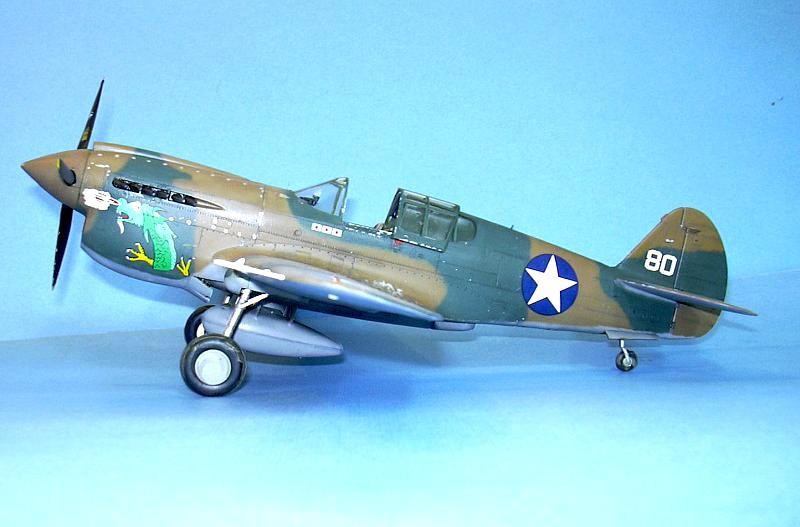
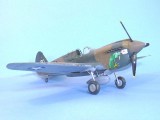
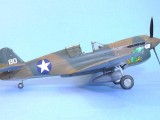
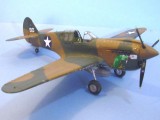
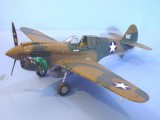
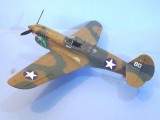
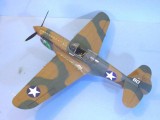

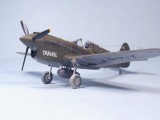
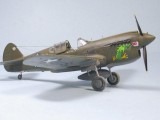
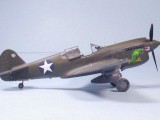

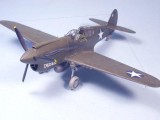
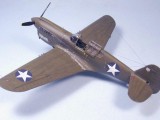
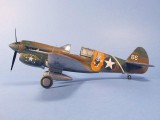
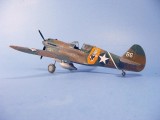

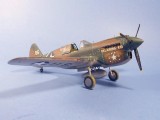
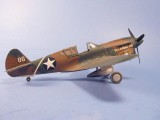
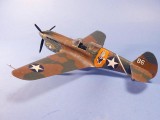
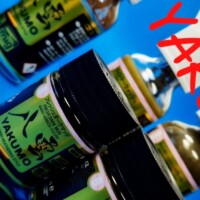
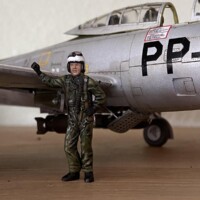


Thanks for the history lesson and the great builds don't hurt either
TC .. you should've been a history teacher .. I could go on and on reading what you post ! Sorry to keep bugging you with my gibberish .. BUT .. well, you are indeed an inspiration to us .. THANKS !
Great models and story!